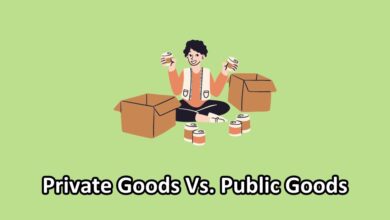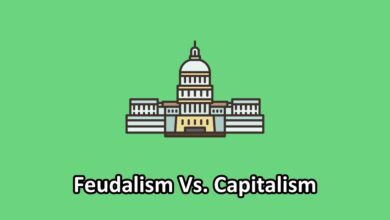Difference Between Supply and Demand in 2024 [With Table]
Are you curious about the fundamental forces that shape our economy? If so, you’ve come to the right place! In this blog, we’ll delve into the captivating world of economics to unravel the intriguing difference between supply and demand. But wait, there’s more! We won’t stop at just explaining these concepts; we’ll also provide you with a handy table that simplifies these ideas even further.
Whether you’re a seasoned economist or someone just starting to explore the world of supply and demand, this blog will serve as your comprehensive guide. So, let’s embark on this enlightening journey to better understand the economic forces that govern our lives.
Supply vs. Demand (A Comparison)
| Supply | Demand |
|---|---|
| Supply refers to the quantity of a product or service that producers are willing and able to offer in a market at different price levels. | Demand represents the quantity of a product or service that consumers are willing and able to purchase in a market at various price levels. |
| Supply represents what producers offer to the market. | Demand represents what consumers want from the market. |
| When the supply of a product increases, it often results in a surplus, which can lead to lower prices as producers compete to sell their goods. | When demand for a product rises, it often results in a shortage, which can lead to higher prices as consumers compete to purchase the limited supply available. |
| Producers determine how much of a product to supply based on production capacity, cost considerations, and market conditions. | Consumers decide how much they want to buy based on their preferences, needs, and budgets, which ultimately shapes the demand for products and services. |
| Supply is generally more elastic, meaning producers can quickly adjust their output in response to price changes | Some goods and services have inelastic demand, meaning consumers continue to buy them even if prices rise, making demand less responsive to price changes. |
| The Law of Supply states that as prices rise, quantity supplied increases, and as prices fall, quantity supplied decreases. | The Law of Demand states that as prices rise, quantity demanded decreases, and as prices fall, quantity demanded increases. |
| Supply has a direct, positive relationship with price. When prices rise, the quantity supplied by producers typically increases. | Demand has an inverse, negative relationship with price. When prices rise, the quantity demanded by consumers often decreases. |
Supply vs. Demand: Explained
What is Supply?
Supply refers to the quantity of a particular good or service that producers are willing and able to provide to the market at different price levels. It’s the backbone of production and distribution, and its significance is immense.
The supply of a product impacts its availability, and when supply increases, prices tend to decrease, benefiting consumers. Conversely, a decrease in supply can lead to higher prices, potentially causing inflationary pressure.
What is Demand?
Demand, on the other hand, signifies the consumer’s willingness and ability to purchase a product or service at varying price points. Understanding demand is pivotal for businesses aiming to optimize their pricing strategies.
When demand is high, prices can rise, resulting in increased revenue. Conversely, low demand may necessitate price reductions to stimulate sales. This interplay between supply and demand affects pricing decisions that can make or break businesses.
The Law of Supply and Demand
The Law of Supply and Demand is a cornerstone of economics, stating that as the price of a good or service rises, the quantity supplied increases, while the quantity demanded decreases, and vice versa. This law dictates price movements, and understanding it is essential for predicting market trends.
When supply exceeds demand, prices tend to drop, and when demand surpasses supply, prices rise. Businesses and consumers alike must navigate this principle to make informed decisions.
Key Differences Between Supply and Demand
- Direction: Supply represents what producers offer to the market, while demand represents what consumers want from the market.
- Effect on Price: An increase in demand typically leads to higher prices, whereas an increase in supply tends to lower prices.
- Control: Producers have more control over supply, while consumers dictate demand through their choices.
- Response to Price Changes: Supply is generally more elastic, meaning producers can quickly adjust their output in response to price changes, whereas demand is often less elastic, especially for essential goods.
- Law: The Law of Supply states that as prices rise, quantity supplied increases, and as prices fall, quantity supplied decreases. On the other hand, The Law of Demand states that as prices rise, quantity demanded decreases, and as prices fall, quantity demanded increases.
Real-World Examples of Supply and Demand
- Gasoline Prices: When global oil supply disruptions occur, such as political conflicts or natural disasters, gasoline supply decreases. This reduction in supply often leads to higher gasoline prices due to relatively stable demand. Conversely, oversupply can result in lower prices.
- Smartphones: Intense competition and technological advancements have increased smartphone supply, offering consumers a wide range of models at various price points. This expanded supply has generally led to lower smartphone prices, making them more affordable and encouraging frequent upgrades.
Determinants of Supply and Demand
Determinants of Demand
Understanding the determinants of demand is crucial for comprehending how and why consumers make choices in the marketplace. These determinants are the factors that influence the quantity of a product or service that consumers are willing and able to purchase at various price levels. Let’s explore the key determinants of demand:
- Price of the Product: Perhaps the most obvious determinant, the price of a product or service directly impacts demand. When prices are lower, consumers typically demand more of a product, and when prices rise, demand tends to decrease.
- Consumer Income: The income of consumers plays a significant role in determining demand. As consumer income increases, they generally have more purchasing power, leading to higher demand for certain goods and services. Conversely, when income decreases, demand may decrease for some products.
- Tastes and Preferences: Consumer preferences and tastes can shift over time, influencing demand. Changes in fashion, lifestyle trends, or cultural shifts can lead to shifts in demand for specific products or brands.
- Population and Demographics: The size and composition of the population in a particular market can affect demand. For example, an aging population might lead to increased demand for healthcare services, while a younger population may boost demand for technology products.
- Price of Related Goods: The prices of substitute and complementary goods can impact demand. Substitute goods are products that can replace each other, like tea and coffee. If the price of coffee rises, demand for tea may increase. Complementary goods are typically used together, like smartphones and mobile data plans. If the price of smartphones drops, it can lead to increased demand for data plans.
- Consumer Expectations: Future expectations of consumers regarding prices, income, or other factors can influence their current demand. If consumers anticipate a future price increase for a product, they may buy more of it now, increasing present demand.
Determinants of Supply
The determinants of supply are crucial factors that affect the quantity of a product or service that producers are willing and able to provide to the market. These determinants can have a significant impact on the availability of goods and services. Let’s delve into the key determinants of supply:
- Production Costs: The cost of producing a product or service is a fundamental determinant of supply. When production costs increase, producers may reduce the quantity supplied to maintain profitability. Conversely, lower production costs can lead to increased supply.
- Technology and Innovation: Advances in technology can enhance production efficiency, increasing supply. For example, the introduction of automated machinery can reduce labor costs and boost output.
- Input Prices: Prices of inputs, such as raw materials and labor, can directly affect supply. If input prices rise, it can increase production costs, potentially reducing supply. Conversely, falling input prices can boost supply.
- Government Policies and Regulations: Government policies, such as taxes, subsidies, and regulations, can have a substantial impact on supply. Tax incentives for certain industries may encourage higher supply, while regulations can impose restrictions that limit production.
- Natural Factors: Natural events like weather conditions, natural disasters, and crop yields can significantly affect supply in industries like agriculture. A poor harvest due to unfavorable weather can lead to reduced supply and higher prices.
- Producer Expectations: Producers’ expectations about future market conditions can influence their current supply decisions. If producers anticipate increasing demand or higher prices in the future, they may reduce supply in the present to take advantage of future opportunities.
Understanding these determinants of supply and demand provides valuable insights into how markets operate and how they respond to changes in various factors, ultimately shaping the prices and availability of goods and services.
Conclusion
In conclusion, the distinction between supply and demand lies at the heart of economics, driving market dynamics and price fluctuations. Supply represents what producers offer, while demand reflects consumer desires, with price changes influenced by the fundamental Law of Supply and Demand.
Recognizing the varying elasticity of these forces is essential for businesses and consumers alike. As you delve into the world of economics, understanding the difference between supply and demand unveils the intricacies of how markets function, ultimately empowering informed decisions in an ever-evolving economic landscape.



3 Comments